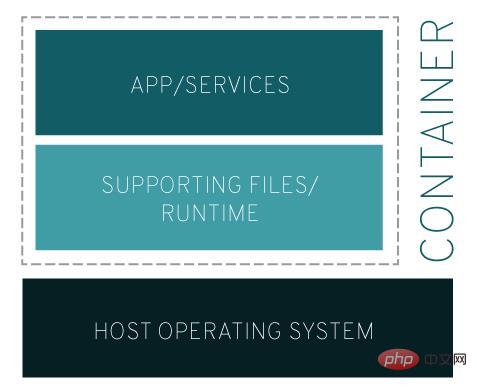
Linux containers are a process or a group of processes that are isolated from the rest of the system; all the files needed to run these processes are provided by another specific image, meaning that the entire process from development to testing to production , Linux containers are portable and consistent; containers ensure that your applications have the necessary libraries, dependencies, and files, allowing you to move them freely into production without worrying about negative impacts.

#The operating environment of this tutorial: linux5.9.8 system, Dell G3 computer.
What is a linux container?
Linux container is a process or a group of processes isolated from the rest of the system. All the files needed to run these processes are provided by another specific image, meaning that Linux containers are portable and consistent from development to testing to production. As a result, using containers is much faster than a development pipeline that relies on duplicating traditional test environments. Containers are ubiquitous and easy to use, making them an important part of IT security.
Why do you need Linux containers?
Suppose you are developing an application. You are using a laptop and your development environment has a specific configuration. Other developers may have slightly different environment configurations. The application you are developing depends not only on your current configuration, but also requires certain libraries, dependencies, and files. At the same time, your enterprise also has standardized development and production environments, with its own configuration and set of supporting files. You want to simulate as many of these environments locally as possible without incurring the overhead of recreating a server environment. So, how do you ensure that your application can run and pass quality checks in these environments, and deploy without headaches, re-coding, and bug fixes? The answer is to use containers.

Containers ensure that your applications have the necessary libraries, dependencies, and files so you can move them into production without worrying about negative impacts. In fact, you can think of the contents of a container image (created using an open source tool like Buildah) as an installation of a Linux distribution, since it is complete with RPM packages, configuration files, and more. However, installing a container image distribution is much easier than installing a new copy of the operating system. This way you can avoid crises and make everyone happy.
Related recommendations: "Linux Video Tutorial"
The above is the detailed content of what is linux container. For more information, please follow other related articles on the PHP Chinese website!